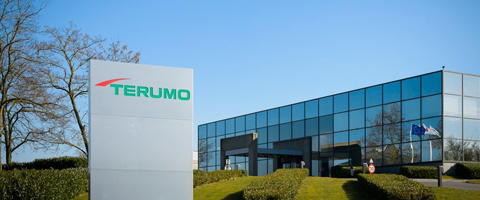A Century of Terumo
Terumo Corporation, a "global medical device giant," was founded in 1921 by Shibasaburo Kitasato, the father of modern medicine in Japan and the first Japanese to be nominated for a Nobel Prize. In 2021, Terumo celebrated its 100th anniversary, embracing the philosophy of "contributing to society through healthcare" and taking new steps toward the next century. Over these 100 years, Terumo has developed many first-of-their-kind products in Japan and the world, providing over 50,000 products and services to people in more than 160 countries and regions. Terumo's century-long journey is one of progress alongside global healthcare.
The Chinese market is Terumo's top strategic market, and over the past 20 years, it has maintained a double-digit compound annual growth rate, making it the fastest-growing region for Terumo's global business.
Cooperation Timeline
Terumo first partnered with AlphaFlow in early 2016, and the collaboration has been ongoing for six years.
Project Motivation
Agile operations to support strategic implementation.
The Chinese market is Terumo's top strategic market. To build an agile and competitive organization, Terumo's management decided to continuously expand the breadth and depth of the process management platform to elevate business development to new heights.
Project Challenges
1. Dispersed Processes, No Unified Entry Point. The existing funding system, budget system, and material management system are independent, leading to fragmented operations. Interrelated business processes across departments cannot be handled uniformly, and cross-departmental and cross-organizational process collaboration is not possible.
2. Traditional Offline Processes, Long Onboarding Cycles. Many processes still run offline in traditional ways, and onboarding requires code development, which is time-consuming and costly to maintain.
3. Manual Process Operations, Low Automation. Current process steps rely on manual operations, with low levels of automation in the process systems, resulting in time-consuming and error-prone processes.
4. Siloed Processes, Difficult Data Sharing. Each subsystem operates independently, and there is a lack of a unified data platform within the group, making data sharing challenging.
Core Application Scenarios
1. Unified Portal, Efficient Process Collaboration
A unified and real-time process management entry point aggregates and reorganizes information resources from various centers, enabling precise collaboration centered around individuals and enhancing the operational efficiency of the group's centers.
2. Zero-Code Process Configuration, Rapid Process Onboarding
A business-oriented process modeling tool with a what-you-see-is-what-you-get (WYSIWYG) interface eliminates the need for IT code development, significantly reducing IT process development and maintenance costs.
3. Bilingual Process Interface, Enhanced User Experience
A bilingual (Chinese and Japanese) operation interface not only meets Terumo's "multinational" business needs but also aligns with its "localization" development strategy in the Chinese market.
4. Flexible Integration, Quick Connection to Group Systems
A fully open and extensible iPaaS integration platform integrates with existing systems such as the material management system, funding system, budget system, SCCM, SAP, and DMS, facilitating data connectivity and helping Terumo build its own comprehensive application platform.
Value and Achievements
1. Significant Increase in Group Operation Management Automation. As of June 2022, over one million process instances have been initiated.
2. Full-Process Management System. More than 200 process templates have helped Terumo achieve cross-company, cross-department, and cross-application online operations, significantly increasing standardization and automation, and reducing costs while improving efficiency.
3. Efficient Operations. The overall process management of the group has been accelerated, with an average approval time of 20 hours per process step. The average time from process initiation to completion is 3.5 days.














